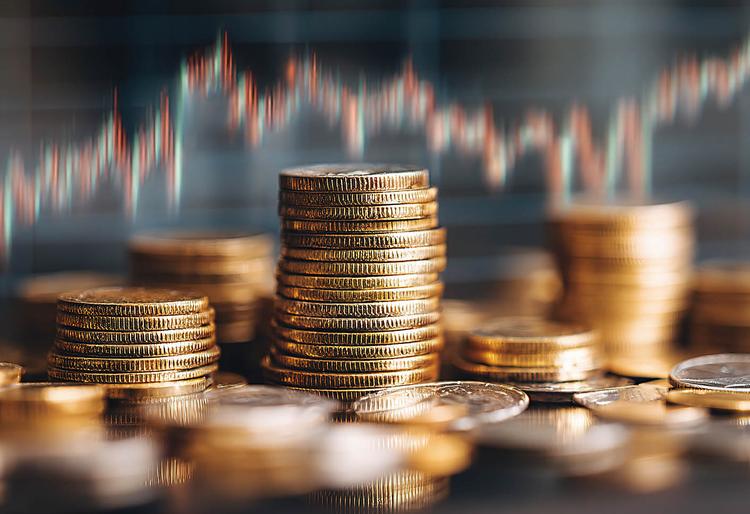
News

June 05, 2025
Bullion Market Update – June 5, 2025

May 29, 2025
Bullion Market Update – May 29, 2025

May 22, 2025
Bullion Market Update - May 22, 2025

April 10, 2025
Texas Precious Metals is excited to announce the launch of Y’all Street, a new streaming media platform dedicated to exploring the business side of entertainment, finance, sports, music, manufacturing, and more. Hosted by Texas Precious Metals co-founder and President, Tarek Saab, Y’all Street brings together fascinating guests to discuss their journeys, challenges, and successes in today’s ever-changing world.
First Guests: David Henrie, Cody Webster, and Tom Power
To kick off the launch, Y’all Street welcomes a powerhouse lineup of guests who represent diverse industries and experiences. The first episodes feature David Henrie, the actor turned entrepreneur, Cody Webster, the 5x PRCA Bullfighter of the Year and businessman, and Tom Power, the innovator revolutionizing manufacturing with precious metals. These conversations provide a unique opportunity to learn from individuals who have navigated the highs and lows of their industries, offering valuable insights into what it takes to succeed in both business and life.
Beyond Transactions Texas Precious Metals has always been interested in developing relationships with customers that are more than just buying and selling precious metals. Y’all Street extends that philosophy by creating a space where financial and business discussions feel personal. The podcast goes beyond market trends to focus on relationships, real experiences, and the bigger picture.
“It’s tough when you’re a business because, often, the relationship is transactional only. It’s ‘call me when you need me’ — you buy the metals, we sell the metals, and that’s it. I want to get away from that,” says Tarek. “I want people to get to know us, to develop a relationship so they feel like they can communicate with us, like we’re on this journey together. I’m interested in other people’s journeys too.”
Tarek continued, “We love Texas and seek to promote our state and its growing role in finance, tech, commodities, and of course – precious metals.”
Real Conversations with Real People Each episode of Y’all Street will feature in-depth conversations with these fascinating guests, sharing their experiences, challenges, and perspectives on their industries and journeys. The goal is to educate, inspire, and entertain — giving listeners a reason to come back, not just to buy, but to engage and be part of a larger conversation.
An Educational Edge In addition to real conversations and storytelling, Y’all Street features a video series, “Unlocking the World of Precious Metals,” designed to educate listeners on investing in precious metals and how the industry works. Created with first-time investors in mind, the series breaks down the world of gold and silver in a way that’s practical, approachable, and easy to understand.
Y’all Street also offers a dedicated Q&A series that dives deeper into how Texas Precious Metals operates and answers some of the most common questions about the industry. These episodes feature insightful conversations with the company’s co-founder and president, offering behind-the-scenes perspective and valuable knowledge for anyone curious about the business or looking to learn more about the precious metals space.
An Extension of the Texas Precious Metals Mission As a trusted name in precious metals, Texas Precious Metals has built its reputation on transparency, education, and long-term relationships with its customers. Y’all Street is a natural extension of that mission, offering a platform where people can connect, share ideas, and learn together. Expect engaging discussions, expert insights, and stories that provide real value. Y’all Street isn’t just another business podcast — it’s a community-driven platform built on trust, knowledge, and connection.
Stay tuned for upcoming episodes with exciting new guests in the world of business, entertainment, and beyond.

March 26, 2025
Shiner, TX – [March 26, 2025] – Texas Precious Metals, a leading precious metals dealer and dedicated supporter of the western sports community, is proud to announce its sponsorship of the Texas A&M Rodeo Team. This partnership reflects the company’s deep commitment to Texas traditions, rodeo culture, and the student-athletes who embody the spirit of hard work and perseverance embraced by Texans everywhere.
With a legacy dating back to 1919, Aggie Rodeo has been a cornerstone of collegiate rodeo for over a century and was instrumental in forming the National Intercollegiate Rodeo Association (NIRA). Today, the program continues to thrive, with over 50 rodeo athletes competing at regional and national levels. As the team transitions from a club sport to varsity status, Texas Precious Metals recognizes the change as an exciting opportunity to support the next generation of rodeo champions.
“When Tarek with Texas Precious Metals reached out to learn about our program and shared their rich history in Texas, I knew this was a perfect connection,” said Aggie Rodeo Coach Roger Hanagriff. “We are excited to gain a partner who sees our vision, aligns with our core values, and is helping our team and students achieve our goals.”
Texas Precious Metals is a proud supporter of the Professional Rodeo Cowboys Association (PRCA), sponsoring major events such as Pro Rodeo, the National Finals Rodeo (NFR), World’s Toughest Rodeo, and The Governor’s Cup. This new partnership with the Texas A&M Rodeo Team strengthens the company’s ties to western sports and highlights its longstanding dedication to the Aggie community.
“As an Aggie-owned business, we take great pride in supporting Texas A&M students and athletes,” said Tarek Saab, Co-founder and President of Texas Precious Metals. “The Texas A&M Rodeo Team has a rich history, and we are honored to contribute to its continued success as it moves into this exciting new chapter.”
With this sponsorship, Texas Precious Metals reinforces its commitment to preserving Texas’ rodeo heritage while investing in the future of collegiate rodeo.
